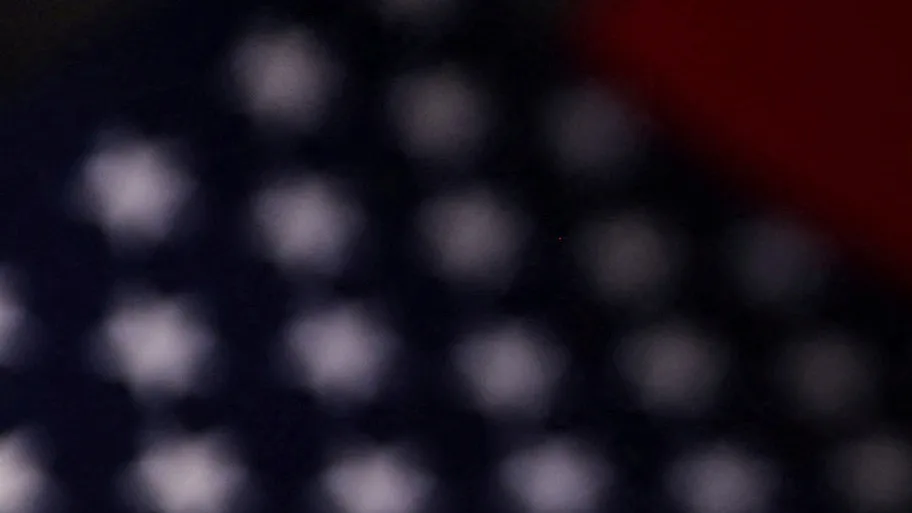With the flip of a switch, TikTok went dark in America.
Instead of the high-velocity carousel of viral morsels, around 10:30 p.m. ET − 90 minutes before the shutdown deadline −TikTok users in the U.S. received a pop-up saying: “Sorry, TikTok isn’t available right now.”
“A law banning TikTok has been enacted in the U.S. Unfortunately, that means you can’t use TikTok for now,” the message read. “We are fortunate that President Trump has indicated that he will work with us on a solution to reinstate TikTok once he takes office. Please stay tuned!”
Under the ban, app store providers and internet hosting services could face hefty fines for making TikTok available to Americans. The app vanished from Apple and Google’s app stores. The Information reported that cloud computing provider Oracle directed staff to shut down the servers hosting TikTok.
How to use TikTok after the ban:Do VPNs and other workarounds work?
TikTok’s abrupt disappearance marooned over 170 million monthly users who made the wildly addictive short-form video app a central part of their daily lives, from teenagers who kept up with friends and trends to creators who earned a living and a shot at internet fame there.
Now they are struggling to adapt to a world without it.
Before TikTok shuttered, one user posted a video in his bathrobe and cowboy boots, lugging a carry-on and a bottle of laundry detergent for his with more than 300,000 followers. “Me arriving to China Jan. 19 so I can still use TikTok.”
“It’s like summer camp is over and we will never see our camp friends again,” one user commented on the video that got millions of views. “I’m literally best friends with a whole bunch of strangers and I’m gonna miss all of you so damn much,” commented another.
Late Saturday night, fans mourned on other social media platforms.
“Just watched TikTok shut down in real time. First the likes and comments stopped working, then saving was disabled, then no new videos would load, then I was kicked out,” one user wrote on X. “The last TikTok I could see was of someone peacefully bopping along to if I were a fish.”
TikTok ban: The long goodbye
TikTok’s future had been flickering for weeks.
Concerns that Beijing could manipulate content to shape U.S. opinion and gather sensitive user data through the Chinese-owned app prompted a congressionally mandated ban unless TikTok sold off its U.S. operations. Supreme Court justices upheld that ban Friday, exhausting the company’s legal options.
President-elect Donald Trump is working on options to postpone the ban but TikTok did not wait for an eleventh hour reprieve and instead pulled the plug.
CEO Shou Chew posted a video on the app thanking Trump and pledged: “More to come.”
“We believe behind the scenes there is significant activity from both financial and strategic tech buyers for the golden TikTok asset,” Wedbush Securities analyst Daniel Ives said.
James A. Lewis, a technology policy expert at the Center for Strategic and International Studies, said TikTok may regret shutting down with its fate up in the air.
“Once they do that, their market value goes way down and they are never getting those users back,” Lewis said. “What’s a big deal is TikTok’s user base, the 170 million fanatical users who love TikTok, and that’s what people want to get their hands on before it blows up. So it’s just really a big gamble for TikTok to do this.”
TikTok was America’s pop culture capital
TikTok could still come back from the dead in America if Trump finds a workaround or if it divests its U.S. operations. Chinese officials have discussed the possibility of allowing Elon Musk to invest in or take control of its U.S. operations. Trump told NBC News he expects to “most likely” implement a 90-day hold.
For now, none of that is much consolation to the faithful throng fans of TikTok, especially those who came of age on it.
For an app with Chinese DNA, TikTok ruled America as its pop culture capital.
Unlike Instagram, Facebook or Snapchat, TikTok didn’t build on social connections, but on raw videos from random strangers that you could not wait to share with your friends.
Powered by a highly secretive algorithm, the app exploded in popularity during the Covid-19 pandemic and never looked back.
Americans became so hooked on everything from hot takes to hard news and skin care to sports that they often commented that their habit-forming “For You” page knew them better than they knew themselves.
That captive audience made TikTok an influential player in Hollywood and on Madison Avenue, not to mention in shopping carts as viral products flew off store shelves after trending there.
TikTok came with the good (raising money for people down on their luck, sharing a few laughs with cubicle comedians or finding solace in grief), the bad (glorifying school shooters ) and the ugly (amplifying white supremacy). And while it came under fire for exposing kids to real-world dangers, it also provided a sense of belonging for young people who didn’t always feel welcomed in their families or communities, such as those exploring their identity as lesbian, gay, bisexual, transgender and queer.
TikTok was far more than shopping and dancing trends, said Jennifer Grygiel, an associate professor of communications at Syracuse University who studies social media. “People also found community that they weren’t finding on other platforms like X or Instagram.”
Where will TikTok users go now?
Mega social media platforms usually suffer a long death, shedding relevance and users as they’re slowly usurped by a new innovative generation of upstarts, like Facebook muscling out Myspace.
TikTok’s demise is a different story. It’s going out near the height of its popularity, the casualty of a geopolitical conflict that many of its younger U.S. fans can’t relate to.
With its fate in limbo since April when President Joe Biden signed a law to address national security concerns, TikTok users watched the drama unfold as Chinese parent company ByteDance and creators joined forces with the company to fend off the law in court, arguing a sale is impossible and the ban is unconstitutional.
TikTok users struggled to be demure (another viral TikTok trend) but, in the end, many of them didn’t stick around for the Supreme Court to rule or for the federal ban to take effect. They’d already begun exploring a universe of new alternatives with RedNote dominating downloads.
“We saw this protest bubble up even in advance of TikTok leaving,” Grygiel said. “The public didn’t wait. They preempted TikTok’s decision.”
But where will they go now? India is a cautionary tale for TikTok refugees desperate for something that can take its place on their screens. No obvious successor is waiting in the app store.
Old standbys like Instagram and YouTube may get an uptick as creators urge their fans to follow them there but they don’t hold the same appeal for young users.
A slew of copycat services was not much of a substitute for young adults in India. Many are still mourning the app’s absence nearly five years after New Delhi banned it.
(This story has been updated with new information.)





